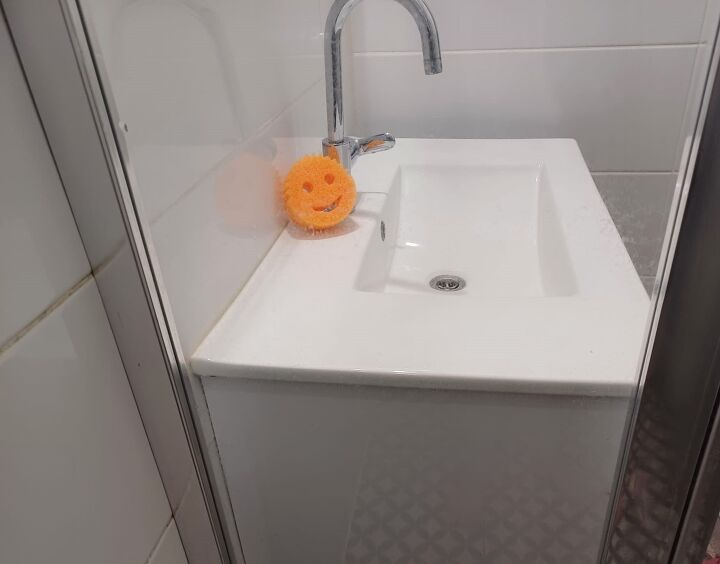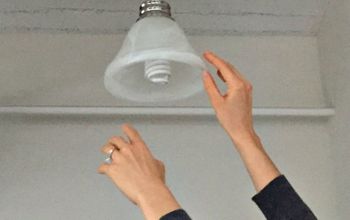Carbon Monoxide the silent killer.

CO poisoning depending upon how concentrated it is can occur very quickly or it can slowly build up over time making you more ill every day as time goes on. And the latter is normally how it happens.
Typical signs of this is light head feeling, Slightly nauseated, Perhaps dizzy and just plane tired. Its pretty much the same feeling you get when your coming down with a cold. But here is where it gets interesting. And to understand why you need to know what is happening. The CO in the air gets into your lungs, It replaces the space within your blood that normally would hold oxygen. The issue becomes important as your blood cells fill with the CO less and less O2 can get into your blood. This explains why you begin to feel ill.
Anyway, because the CO takes a lot more time to leave the blood cells then it takes to get into it, your blood over time begins to accumulate the CO.
So you get up in the AM feeling like your coming down with something, but like everyone else you need to pay the bills so you go to work. Towards the end of the day you begin to feel a little better as the CO is leaving your blood being replaced by O2, But not all of the CO has left. The next day you wake to feel even worse then the first. The concentration of the CO is greater then the first because of your blood not giving all of the first days CO up. Each day you go to work feeling worse and worse, but you manage to hang in there to the weekend where you plan to simply stay in bed to fight that cold. Well that is all it takes, Your not getting that fresh air and your staying in the CO latent air and eventually you pass out and expire.
This can happen in a few days or in the case of the store in the mall in NY in a very little amount of time.
So what can you do to protect yourself?
As the video shows, get a CO alarm installed on every level. CO is very much like air and floats around very easily. Many people think it will only be found around the furnace. That is not simply true.
The next thing is check the operation of your heating equipment. A few things you can do yourself. Check the flue pipes that run from the furnace or hot water heater to the chimney. Wear some thick gloves so you do not get burnt and press and squeeze the pipes. The metal pipes, particularly those on the hot water heater tend to rust out, yet they look fine. You might notice tiny rust spots on the pipe. That is a sign that the pipe is about to fail If you can crush the pipe easily in your fingers, you need to change this pipe out.
Ok assuming the pipe is ok the next thing you want to do is to check the flame, if you can see it. Newer heating appliances have sealed combustion chambers where its hard or impossible to see the flame. In any case if you can, turn the appliance on and look at the flame. It should be a bright blue in color, With perhaps some lighter blue mixed in. The flame should be almost noisy and not bending to one side or another. The entire flame should look the same. If your seeing that, your system is running well and very little CO is being produced. However if the flame is wavy and has a lot of yellow mixed in, the heating appliance needs to be fixed. The yellow flame or a flame that is moving all around is a sign that the heating appliance is not providing a complete combustion which will result in higher CO levels and at one point enough to kill you.
This flame test should also be done on your gas stove cook top and oven. Ever wonder why you do not die when your cooking that holiday meal? That is because the bright blue flame your seeing is producing very little CO so the byproducts are somewhat safer then those of a yellow flame. If you have a yellow flame on the stove, clean the burners or get a pro in to adjust the air ratio on the stove.
Another thing is humidity. We all know that our homes tend to dry out in the winter months which is why we always add humidifiers on the heating system to add that moisture. Well when we burn gas we also create moisture as one of the byproducts of the combustion process. This moisture normally goes harmlessly up the chimney. That is why you see all the white smoke in the early am coming out of everyone's chimney when its really cold outside. If your chimney becomes blocked for what ever reason or the flue falls apart because of the rust, (now you know why it rusts) This moisture will build up in the house much faster then you could ever do with a humidifier installed. The very first place where you will see this is on your windows. The cooler glass surfaces will condense the moisture quite quickly. So if your seeing excessive moisture on the windows in the winter, check the chimney. Remember that holiday supper? Think about the kitchen window, Remember it steaming up? That is because of the cooking and the added moisture from the stove. Ask a cook, cooking with gas in an oven keeps things from drying out as fast as electrical ones do.
In any case, check your CO alarm and be safe, those at HomeTalk want you around a bit longer.
-
For those trying to view the video, working on the link. error message. It will be up soon!
 Woodbridge Environmental Tiptophouse.com
on Feb 25, 2014
Helpful Reply
Woodbridge Environmental Tiptophouse.com
on Feb 25, 2014
Helpful Reply -
-
Thank you for these great tips and for representing Hometalk! :)
 Miriam Illions
on Feb 25, 2014
Helpful Reply
Miriam Illions
on Feb 25, 2014
Helpful Reply -
-
Thanks for the answers, but I'm still hoping for more ideas.
 Woodbridge Environmental Tiptophouse.com
on Feb 25, 2014
Helpful Reply
Woodbridge Environmental Tiptophouse.com
on Feb 25, 2014
Helpful Reply -
-
Had my own scare with Carbon Monoxide: http://tantienhime.wordpress.com/2012/04/20/please-check-your-home-for-carbon-monoxide/
 TantienHime
on Mar 04, 2014
Helpful Reply
TantienHime
on Mar 04, 2014
Helpful Reply -
-
Very informative post, as side effect of Carbon monoxide is detrimental for our health, it is better to understand the ill effects well on time to avert further health issues, also working towards elimination of pollution should be motto.
 Move Masters
on Mar 05, 2014
Helpful Reply
Move Masters
on Mar 05, 2014
Helpful Reply -
-
Thanks for the answers, but I'm still hoping for more comments!
 Woodbridge Environmental Tiptophouse.com
on Mar 06, 2014
Helpful Reply
Woodbridge Environmental Tiptophouse.com
on Mar 06, 2014
Helpful Reply -
Related Discussions
How do I clean salt marks on my salt water pool?
My salt water pool leaves white marks all around the pool I have tried everything to remove them with no luck. Can someone please help me????
If you could redo your master bathroom, what would you change?
Dreaming of a master bathroom remodel?Tell us: If you could change just one thing, what would it be?Your input could inspire others looking for master bathroom ideas ... See more
Hardwood Floors or Carpet in Bedroom: What's Your Preference?
Hey Hometalkers! We've got a cozy debate going on here: when it comes to bedroom flooring, do you lean towards the warmth of carpet or the timeless elegance of hardwo... See more
What can I do about wood smoke coming into my house?
I need help. My back door neighbor heats with a wood stove all winter. They are downhill from me. Almost all their smoke makes its way into my house, causing headache... See more
How to find out the value of antique furniture
My husband and I are looking to sell his grandmother's dining room set but, we have no idea what to ask for it. We could not find any markings as to who made it, all ... See more
How do I fix a broken metal hanging rod in my closet
I have a broken shelf hanging rod in my closet I tried gluing And taping it and nothing worked I need help and also the shelf is slightly bent




